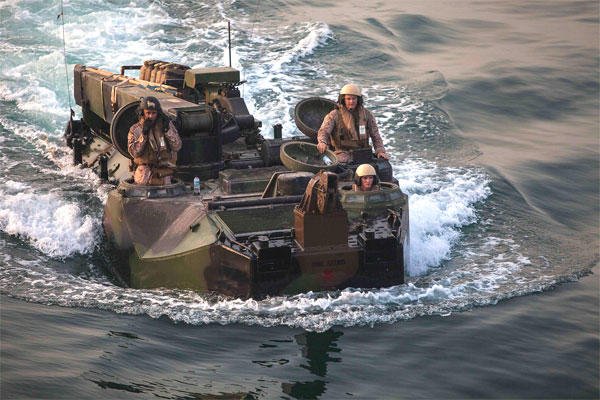The Navy's vice chief of naval operations told lawmakers this week that the service depends on shorter deployments in order to meet readiness recovery targets.
During a March 17 hearing by the House Armed Services Committee's subcommittee on readiness, Adm. Michelle Howard said a heavy operational tempo during wartime had taken its toll on Navy fleet and ship readiness. While the Navy had invested heavily in deploying and next-to-deploy units and equipment, she said, that came at the expense of units "on the bench."
"Where we've made choices, our ability to surge has become smaller," she said. "We have lowered the readiness of those assets and in some cases the readiness was lowered because we've consumed those assets."
Deployments of nine and 10 -- and in some cases, even 11 months -- had taxed fleet readiness over the last decade, Howard said. While the Navy predicted it could perform maintenance and training necessary to return the service to previous readiness rates in a little more than five years, that estimate depends on returning to traditional seven-month deployments, she said.
"In order for us to get to an end state where [the] entire fleet is recovered, we have to manage the amount of fleet that's out," Howard said. "We have determined we can have about one-third of the fleet out while we're maintaining and training the rest of the fleet.
"But in the end, when you look at a 36-month maintenance-to-deployment cycle, it means our deployments need to be about seven months, in order to get the ships back to get to maintenance, in order to have the time to train the crew back up to their next deployment."
According to testimony Howard submitted to the subcommittee, no Navy ship is scheduled to deploy for more than seven months in the coming year.
Fiscal 2017 will be the first year in a concerted Navy effort to stabilize deployment length through an "Optimized Fleet Response Plan."
Speaking about the plan in February, Chief of Naval Operations John Richardson said the Navy was on track to hit seven-month deployments by the end of 2017.
Extended deployments have cut into ship maintenance schedules, and also proved frustrating and exhausting for sailors kept away from their families longer than expected.
The Bush Carrier Strike Group finished a nine-month deployment at the end of 2014, one of the longest for a carrier strike group in recent history. The Bataan Amphibious Ready Group spent nearly 11 months at sea in 2012, the longest Navy deployment since World War II.
"We have to be disciplined and hang on to that [fleet response plan] in order to get to recovered readiness," Howard said.
-- Hope Hodge Seck can be reached at hope.seck@monster.com. Follow her on Twitter at @HopeSeck.
Related Video:






























